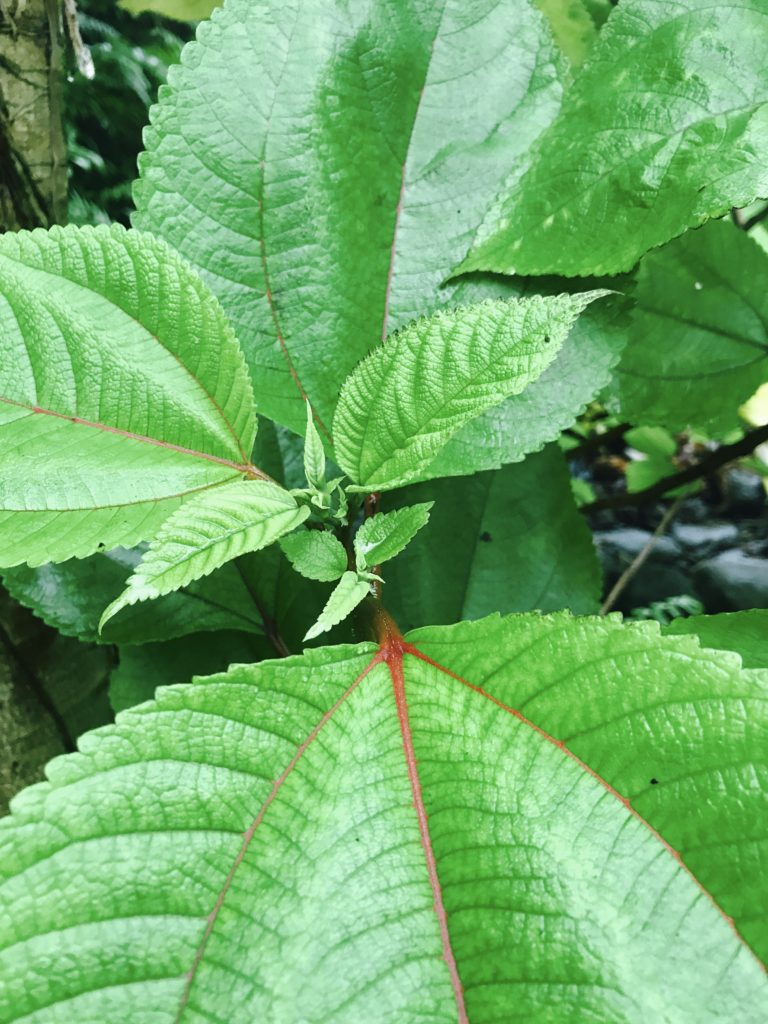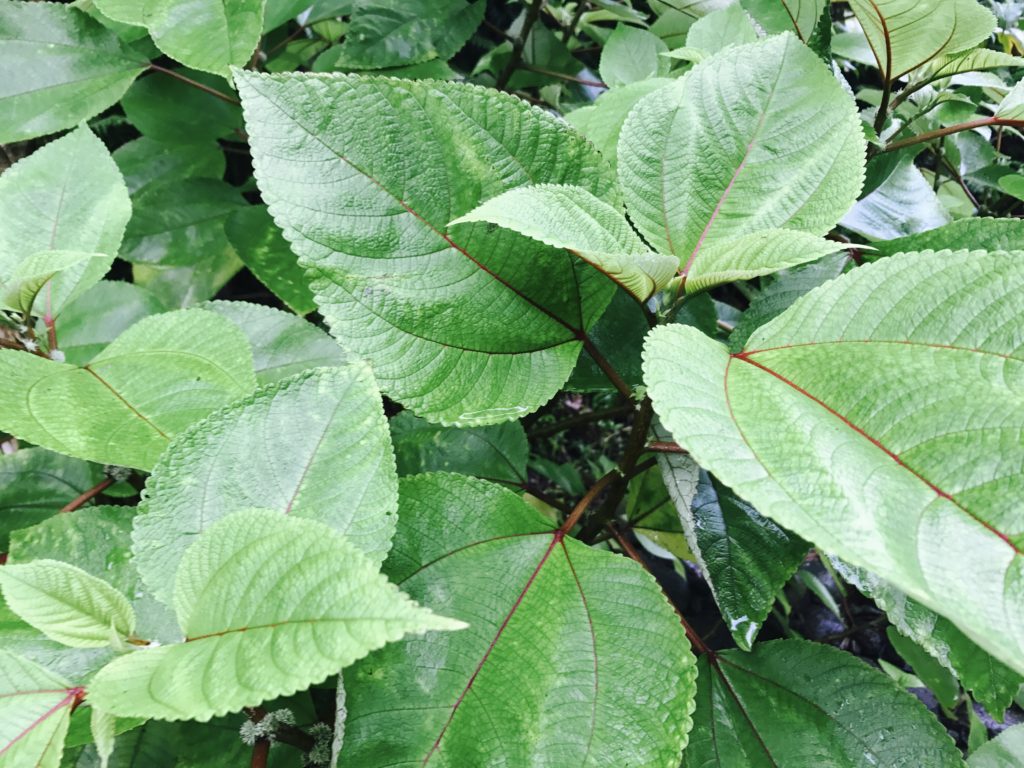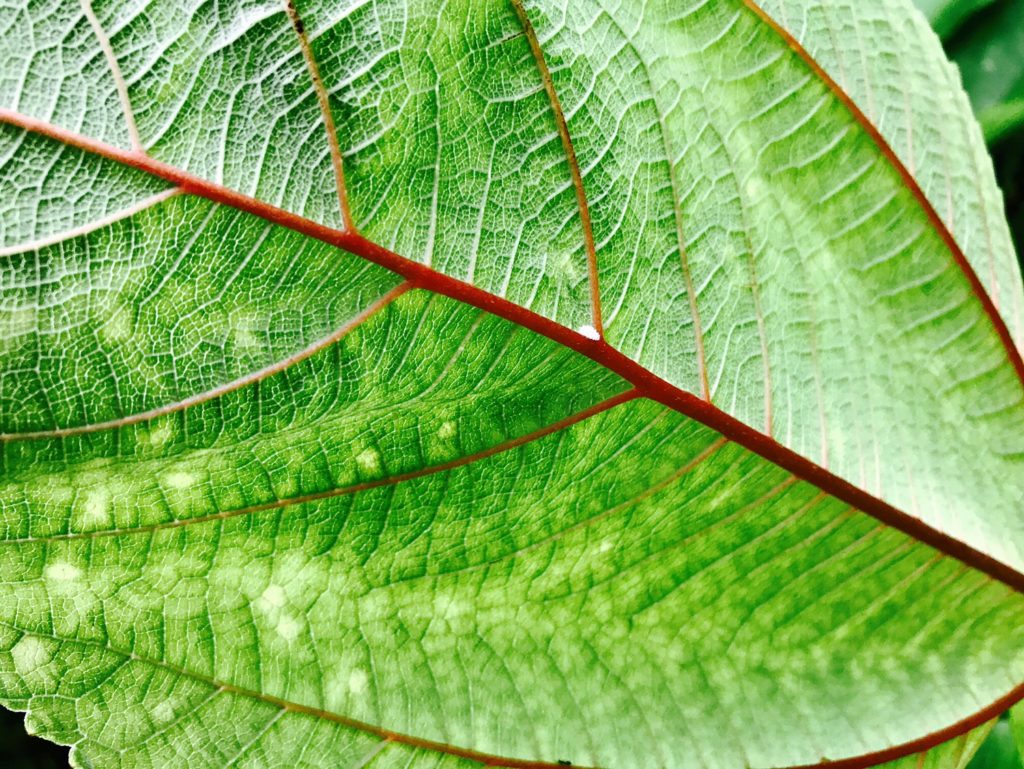Māmaki: A Traditional Hawaiian Medicinal Herb
Native to Hawai’i, māmaki is a member of the nettle family, but unlike its plant relatives elsewhere, it has no painful stinging hairs.
Known as waimea on the island of Kaua‘i, Māmaki is invaluable as a native Hawaiian traditional medicinal herb.
During the later months of pregnancy, expectant mothers ate the māmaki fruits and seeds.
The fruit or berries were used in healing sores and wound, as a mild laxative and to treat thrush.
Most commonly used were the leaves and bark of two varieties, māmaki keʻokeʻo (green-veined leaves) and māmaki ʻulaʻula (red-veined leaves). Used either fresh and dried māmaki leaves are used to make a mild, healthy tea that is said to have the same soothing effect on the nervous system as jasmine tea.
Māmaki tea helps with fatigue, as well as many internal disorders of the stomach, colon, bladder, bowel and liver.
Infused leaves are used in treatment for depression, high cholesterol, high blood pressure and infections.
It is also known to relieve the symptoms of PMS and gout.
Other than possibly causing mild agitation or insomnia, there are no known serious medical side effects from consuming māmaki. This makes it a highly desirable and a prized medicine amongst the Hawaiians.
Māmaki is also one of the best native plants for attracting Hawai‘i’s only two native butterflies—the Kamehameha butterfly and koa butterfly. Therefore, it is wise to not spray any insecticides on māmaki plants grown on your property.
Māmaki can grow in shrubs that are only two feet tall and even up to heights of 25 feet, depending on the condition of the soil. It does well growing in the shade of taller trees or shrubs and other partially shaded locations. The red-veined varieties can be planted in the full open sunny areas of lower elevations. It does not do well in the hot, dry coastal areas. Māmaki will do well in containers in part shade, with a little help of some half strength fertilizer.
The red-veined varieties can be planted in the full sun areas of lower elevations but it does not do well in the hot, dry coastal areas. Māmaki will do well in containers in part shade, with a little help of some half strength fertilizer.
Māmaki will do well in containers in partly shady areas, with a little help from some half-strength fertilizer.
Early Hawaiians used māmaki wood to make clubs and kapa beaters (iʻe kuku). They also mixed the sap with water to keep the kapa (tapa) wauke moist in the preparation process.
Mostly on the island of Hawai’i, māmaki was an important source of kapa. The other islands used a mix of wauke and māmaki for their kapa.
It was the second best choice of kapa; it was more durable than wauke, but only when dry. It could not be washed or gotten wet because it would then be easily torn, like paper. When wauke was not readily available the inner bark of māmaki was made into a brown-colored kapa cloth.
Made the same way as kapa wauke, the quality was said to be very good and fit for a king!
It has been noted that in a well-known Hawaiian collection, it is estimated that more than a third of the kapa samples were made from māmaki
Māmaki is one of those native Hawaiian plants that can add many benefits to our lives if we choose to utilize it.













